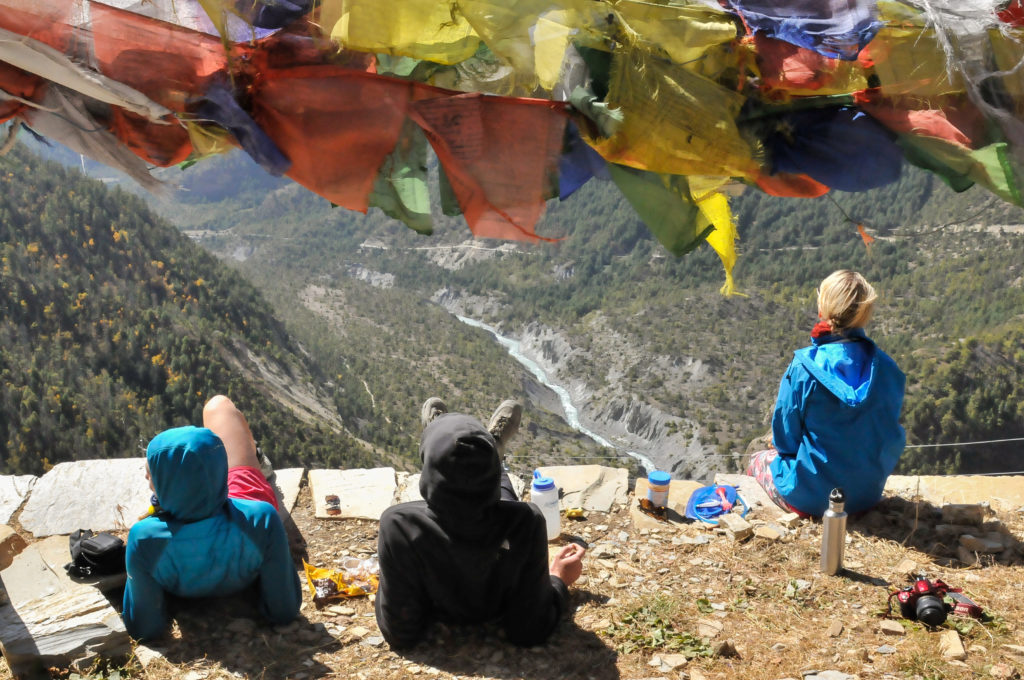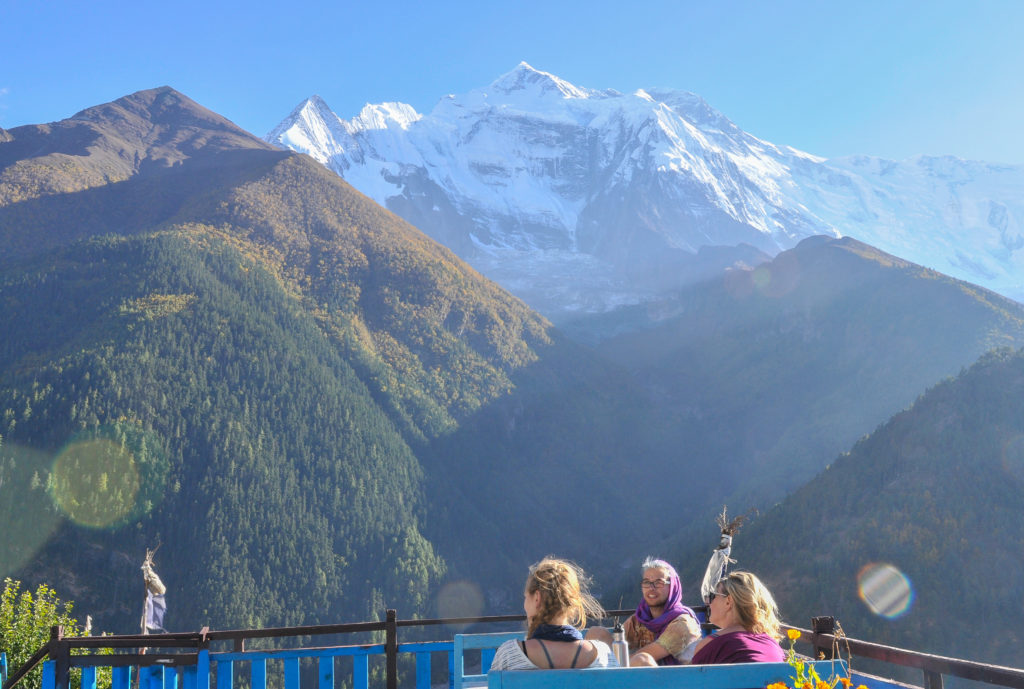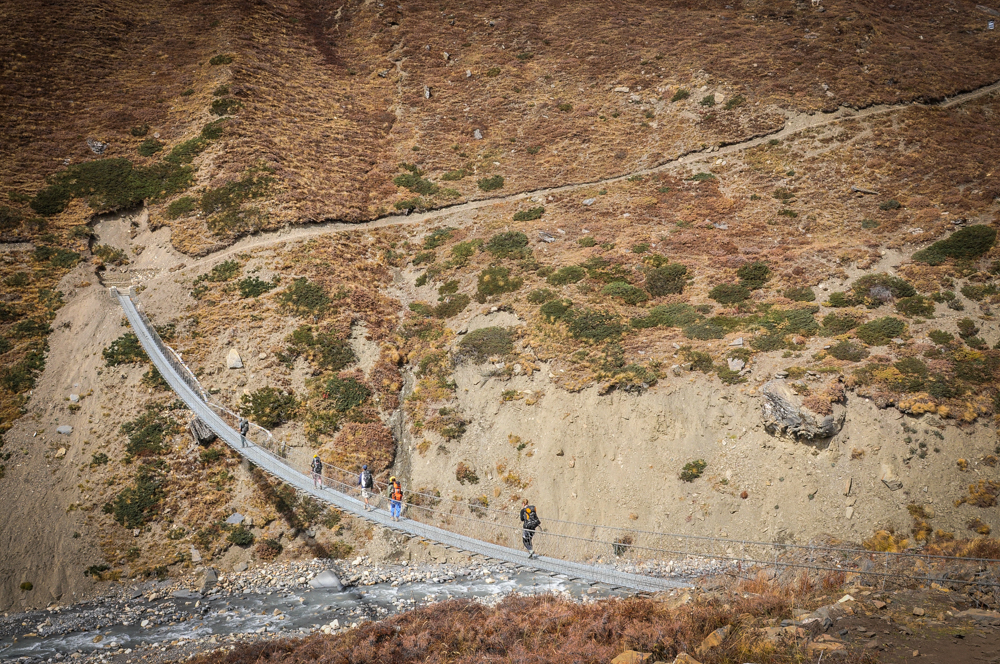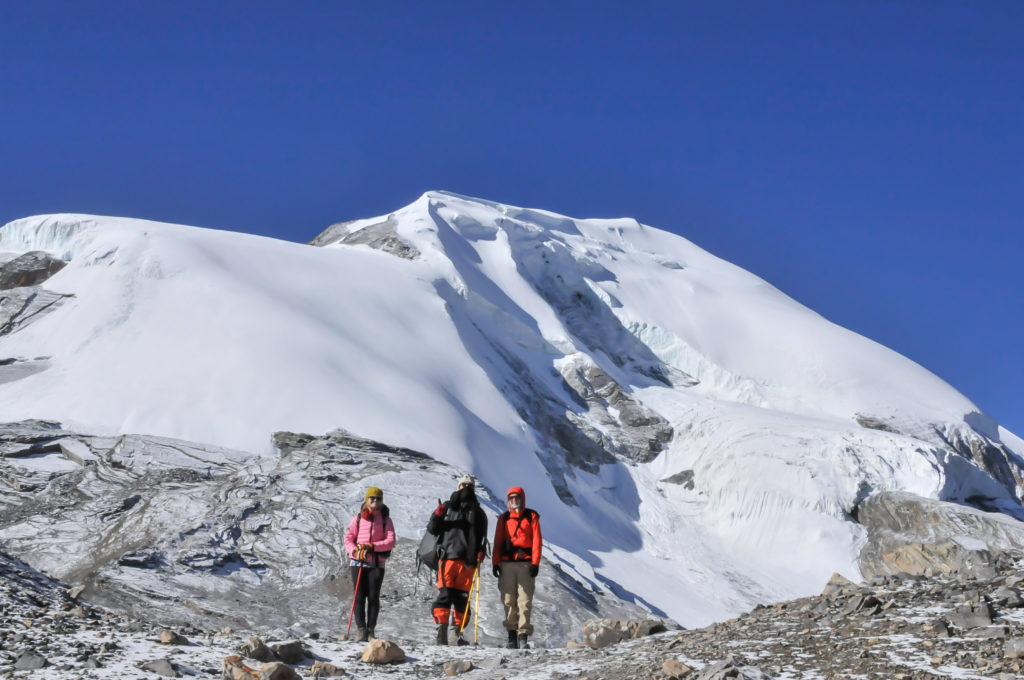
Namaste, I’m leading a trek in Nepal in April 2019. If you’re coming with me, here’s a quick list of what you should bring and why. If you’re headed down up the trail alone, stay tuned for a more comprehensive Annapurna Circuit trekking guide to be released here this summer. You’d have more fun with me though, check out the details of my Meditation and Trekking in Nepal trip here.
Packing List for Trekking the Annapurna Circuit :
- Passport
- Permits (TIMS Card + ACAP costing roughly $60 total)
- Cash for any extras during the trek like alcohol & souvenirs (if traveling with the Schu crew $100-$200 is plenty)
- Book or E-Reader + charger (optional)
- Small journal + pen (optional)
- Dice or cards (optional)
- Camera + Extra battery + Charger (optional)
- Phone + Cord + headphones (optional)
- Plug adapter
- Headlamp
- Backpack + rain cover
- Trekking poles (optional, but highly encouraged + very easy to buy in Kathmandu)
- Sleeping bag (optional, but encouraged if you get cold easily)
- Camelbak hydration system or 1 large water bottle or 2 small bottles
- Boots or trail shoes (whatever you wear, break in your shoes at least three weeks before the trek)
- Shower sandals (totally up to you – it’s also nice to wear something other than boots at camp)
- 2 pairs of hiking socks
- 1 or 2 pairs Hiking Pants / Yoga Pants (I brought one thin and one fleece lined pair)
- 7 pairs of underwear – I don’t skimp here. It’s a good idea to bring old undies that you can toss out along the way to cut weight.
- 2 sports bras
- 1 or 2 tank tops or undershirts
- 1 short sleeve shirt – choose a nylon or polyester blend to keep you dry
- 1 long sleeve shirt – choose a wicking warm fabric like wool to keep you dry and warm
- Sun hat or a buff may suffice depending on your preference
- bandana or Buff for wiping sweat and protecting your mouth and face from dust and smelly shit holes
- Sunglasses
- Raincoat
- 1 down coat
- 1 warm hat
- Gloves these are perfect, but you can find hand knitted wool ones along the trail too
- 1 comfortable outfit you can change into at the end of the day – ideally you’ll keep this clean & you’ll wear it while lounging after your shower and to bed each night ::
- 1 pair of comfy and warm pants
- 1 tank top or t shirt
- 1 long sleeve shirt
- 1 pair of socks
- Turkish towel because it doubles as a scarf OR a travel towel
- Toiletries : keep it light & know that individual soap + shampoo packets can be bought in most villages
- Deodorant
- Toothbrush + paste
- Soap
- Shampoo + Conditioner
- Hairbrush + hair ties
- Sunscreen
- Chapstick with SPF
- Medication – it’s a good idea to have a basic first aid kit (if you’re coming with us, we will have a comprehensive one)
- Snacks (completely optional + we’ll offer a pile of munchies that you can pack and take with you on day one)
- Tea (optional)
The important packing points for the Annapurna Circuit trek are certainly your permits and cash money. You need to show your permits quite often, almost every day, as that’s how the government accounts for hikers, which is uber important during storms and other natural events. There are no ATMs along the route so it’s best to take a bunch of cash. Do some research and create a budget for each day considering food, tea, snacks, dessert and beer. Buying small items like soap and shampoo along the way isn’t a bad idea if you don’t feel like carrying it all at once.

You really don’t need too much technical equipment for this trek. The main items you should have are a great backpack (great meaning lightweight, comfortable, fits your body), a trekking pole or two, some type of water container, comfortable boots or shoes, a lightweight down jacket and possibly a sleeping bag. Most people *do not* carry a sleeping bag. I did and I can say I was never cold and I always slept well. My hiking partners could not say the same and by the end of the trek were begging me to unzip mine and share, which I was happy to do because I was sweating. Trekking poles are cheap and easy to obtain in Nepal. Kathmandu is basically a basecamp for adventure so any gear or clothing you may need will certainly be available for rent or purchase.

Once you reach Manang, it starts to feel chillier. There are a couple larger (still very small) stores in Manang that sell sweatshirts, scarves, mittens and other essentials for the rest of the hike. Along with basic clothing and supplies there are also a couple villages that sell artisan items like woven or knitted scarves and hats made of yak’s wool. You may be able to find a unique souvenir or gift in the mountains so carrying a few extra (thousand) Nepalese rupees is never a bad thing.
That’s about it. Food, water and shelter is abundant throughout the entire Annapurna Circuit trek so it’s kinda hard to completely screw up here. You’ll notice food and other items start to increase in price as you move into more remote areas, but otherwise there are no major expense surprises waiting for you. If you have any specific questions about the Annapurna Circuit trek – throw ’em at me.


Miss you in the trek as I will be doing it this year in September-october.
However I am planning for the Tilicho lake as well. Since I will be alone, is it necessary to have a guide there?
Also, have you any idea of how far the Jeep’s/ buses are playing beyond bhulbhule at present and can I get bus/Jeep from muktinath to pokhra?